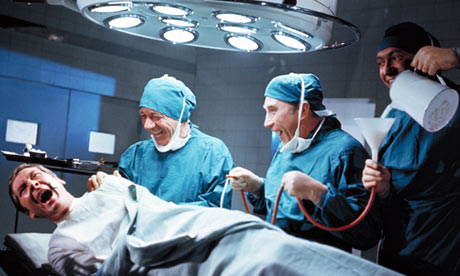With every edition of the DSM, the number of conditions diagnosed as a problem suitable for psychiatric intervention expands. You, dear reader, may be suffering from a mental illness that you never knew existed. So if like me you really get angry now and then, the DSM suggests that you may be suffering from “disruptive mood dysregulation disorder”. Or if you have the occasional senior moment, you may well be afflicted with the new diagnosis of “mild neurocognitive disorder”. And if you really feel anxious and scared about experiencing pain and discomfort, you may have “somatic symptom disorder”.
The eccentric loner, the shy stranger lacking in social skills, the naughty child, anyone who eats too much or the sexually confused teenager have all become candidates for the psychiatrist’s couch. What’s important about the DSM is that it provides a language and narrative through which the problems of existence become medicalised. And in a world where a medical diagnosis represents a claim for resources, what the DSM says really matters. The verdict of the DSM not only affects insurance and drug companies interested in their bottom line but also anxious parents who rely on a diagnosis to gain special help for their child.
Not surprisingly, the latest edition of the DSM has become a subject of controversy. Different groups of medics and psychiatrists have questioned the scientific reliability of some of the new diagnostic categories. Some have queried the dropping of the category of
Asperger’s syndromeand the decision to include it under a general autism diagnosis. Others argue that the psychiatric lobby has become a captive of the pharmaceutical industry. But what is not at issue is the ethos of medicalisation promoted through this influential manual.
The term medicalisation refers to the cultural process through which a range of human experience is reinterpreted through the language of medicine. In recent decades, many everyday experiences have become redefined as issues of health that require medical intervention. Through reinterpreting existential problems such as loneliness, shyness, fear, anxiety, loss of control or grief as medical ones, the meaning people attach to them fundamentally alters.
Medical problems require treatment and rely on professional intervention to cure the patient’s illness. But why should grief or shyness or even anger be treated as a disease? And why should professionals possess a monopoly on how to interpret the pain and disappointment that people experience at different stages of their lives? The real threat posed by the expansion of mental health diagnosis is that it takes away from people the confidence that they need to make sense and give meaning to their personal experience.
The problem is not that professional advice is always misguided, but that it short-circuits the process through which people can learn how to deal with problems through their own experience. Intuition and insight gained from experience are continually compromised by professional knowledge. This has the unintentional consequence of estranging people from their own feelings and instincts since such reactions require the affirmation of the expert. In such circumstances, people’s capacity to handle relationships and to have confidence in their relationships diminishes further. In turn, this creates new opportunities for professional intervention in everyday life.
The manner in which emotional problems have become diagnosed as a form of disorder raises questions about the ability of the individual to deal with disappointment, misfortune, adversity or even the challenge of everyday life. And, sadly, when people are continually invited to make sense of their troubles through the medium of therapeutics, it severely undermines their resilience.
Once the diagnosis of illness is systematically offered as an interpretative guide for making sense of distress, people are far more likely to perceive themselves as ill. That is one reason why in Western society the number of people diagnosed as suffering from mental illness has risen exponentially. The explanation for this trend lies not in the fields of epidemiology, but in the realm of culture that invites people to classify themselves as infirm.
Recently, the British Psychological Society’s division of clinical psychology has attacked the psychiatric profession for offering a biomedical model for understanding mental distress. But its criticism was not directed at the ethos of medicalisation as such, but only at the tendency to associate mental illness with biological causes. What it offered was an alternative model of medicalisation – one where mental illness was represented as the outcome of social and psychological cause. It seems that medicalisation has become so deeply entrenched that even critics of the DSM accept its premise.
The problems of life can be painful. But this experience of existential agony must not be rebranded as an illness. Medicalisation empties experience of its creative content and assigns human beings the status of permanent patients. The promiscuous expansion of diagnosis also trivialises mental illness. Learning to distinguish between normal suffering and illness is a mark of a mature and confident culture.
Frank Furedi is a sociologist whose books include ‘Therapy Culture’
